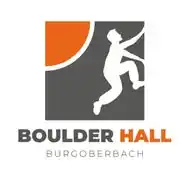Primary School Material +263
13.8K subscribers
About Primary School Material +263
*Excellence is our hall mark.*
Similar Channels
Swipe to see more
Posts
*GENERAL PHYSICS* *Title: Building a Simple Water-Level Indicator Using Principles of Buoyancy and Hydrostatics* *Problem:* Many farmers and households in Zimbabwe struggle to measure water levels accurately in tanks, wells, or reservoirs, leading to overflows or shortages. The problem is how to develop an easy, inexpensive, and reliable water level indicator using locally available materials. *Objective:* Use principles of buoyancy and hydrostatics to design and build a simple water level indicator. *Stage 1: Problem Identification* Accurate water level measurement is crucial for efficient water management, especially in areas with limited access to advanced technology. Existing solutions are expensive or unavailable, so a simple, affordable device is needed to help communities monitor water levels easily and prevent wastage or shortages. *Stage 2: Investigation and Data Collection* Understand that objects float based on buoyant force, which depends on the displaced water volume. When an object is submerged, it experiences an upward buoyant force equal to the weight of displaced water. Use this principle to design a device that indicates water level by floating or tilting. Gather data on locally available materials like plastic bottles, sticks, or old foam, and their buoyant properties. *Stage 3: Generating Solutions and Planning* Design a simple water level indicator using a locally available plastic bottle or container. The idea is to attach a floating object (like a small plastic bottle or piece of foam) that rises and falls with water level. Connect a pointer or flag to the float that indicates the water level on a scaled board or stick fixed outside the tank. Materials could include: - Old plastic bottles or containers - Wooden sticks or bamboo (locally available) - String or twine - A piece of cardboard or a wooden board as a scale - Rope or wire to attach the float *Stage 4: Implementation and Construction* 1. Attach the float (plastic bottle or foam) to a string or wire. 2. Fix the string to a sturdy support inside or outside the tank, ensuring the float can move freely with water level changes. 3. Attach a pointer or flag to the float that points to a scaled board or stick outside the tank to show water level. 4. Test the device by filling the tank with water at different levels and observing the float's position and pointer movement. *Stage 5: Testing and Observation* Record the water levels at which the float and pointer indicate different levels. Ensure the device moves smoothly and provides an accurate reading. Make adjustments as necessary for stability and reliability. Discuss how the principle of buoyancy explains the float's movement and how simple physics can solve practical problems. *Stage 6: Conclusion and Lessons Learned* This simple water level indicator demonstrates how buoyancy and hydrostatics can be applied locally to solve real problems. It is affordable, easy to build, and uses materials readily available in Zimbabwe. Challenges include ensuring the float remains stable and responsive. The key lesson is that physics principles can be used creatively to develop sustainable, low-cost solutions for everyday needs.
*Monday 2 June 2025* *Mathematics* 🥏🎲🥏🎲🥏🎲 *Key Words* Combined operations – are numerical expressions in which multiple operations (addition, subtraction, multiplication or division) are displayed with parentheses. Addition – is an operation that finds the total number when two or more numbers are put together. In other words, addition is the process to find the sum of two or more numbers symbolized by (+). Subtraction – is a mathematical operation that tells us the difference between two numbers it is symbolized by (–). Multiplication – is the process of finding the number (product) obtained by repeated additions of a specified number and it is symbolized by (×). Division – is splitting into equal parts or groups and it is the result of “fair sharing”, it is symbolised by (/ or ÷). Order of Operations Suppose you are asked to evaluate an expression that looks something like this; 8 + 4 × 3 ÷ 2 =? The expression above contains three operations. Can you name them? When an expression contains many operations, we must be careful of what order we do the operations in. For example, if we do all the operations as we would read them (from left to right), we would get the following: 8 + 4 × 3 ÷ 2 = 8 + 12 ÷ 2 = 8 + 6 = 14 However, in a few minutes, we will see why the correct answer is actually 14. The reason for this surprising result is the Order of Operations. The Order of Operations states that you do some things, like multiplication, before others, like addition and subtraction. Here are the rules in the Order of Operations: • Do everything inside of brackets first. • Multiplication and division, performing them left to right. • Addition and subtraction, performing them left to right. Example 1 Evaluate 8 + 4 × 3 ÷ 2 =? Solution 8 + 4 × 3 ÷ 2 = 12 × 3 ÷ 2 = 36 ÷ 2 = 18 (wrong answer) In Example 1, we divided first and then multiplied (left to right). So, it turns out that we were lucky and followed the order of operations without knowing it! In the future, we will always follow the rule above rather than guessing. Let us apply Order of Operations at our example, 8 + 4 × 3 ÷ 2 Multiply 4 and 3 first to get 12 = 8 + 12 ÷ 2 Divide 12 by 2 to get = 8 + 6 Lastly, add 8 and 6 = 14 (correct answer) Example 2 2 + 4 × 3 − 1 =? Solution 2 + 4 × 3 − 1 = 2 + 12 − 1 (× first) = 14 − 1 (+ and − next, so we do + first) = 13 Example 3 9 − 6 + 1 =? Solution 9 − 6 + 1 = 3 + 1 (left to right, as + and − have the same priority) = 4. From the Order of Operations, we see that the division and multiplication must be done before the addition. We also know that we multiply before dividing in this case because the multiplication sign comes first when we read the expression from left to right. *Exercise 1* Solve the following in the right order. 1. 5 × 5 + 9 2. 4+ 2 × 8 + 3 3. 54 + 8 × 7 4. 12 + 2 × 8 + 6 5. 8 + 25 ÷ 5+ 2 6. 3 × 10− 8+ 2 7. 120 − 2 × 8 − 4 8. 63+ 8 × 5 ÷ 8 9. 80 + 18 ÷ 2 × 18 – 7 10. 4 × 4 + 9 – 9 + 1 https://whatsapp.com/channel/0029VacyWp52kNFk9c6opU3Z
*CIVIL SERVANTS ONLY# GET THE CHEAPEST CASH LOAN COUNTRY WIDE* GET IN TOUCH WITH THE TRUSTED LOAN CONSULTANT *SSB DEDUCTION LOANS®️* *Ministries:* ```Education☆Health☆DDF☆Transport☆Agriculture☆Public works☆etc...``` *💵💵USD LOANS💵💵* *💲250* up to *💲 *3000* Gadget Available at zero deposit:MOTORBIKES,🏍 Cellphones, laptops, TVS, SOLAR SYSTEM. Furniture *@Registered Reliable MicroLoans Provider✅ * Send message direct to +263773769475 Or follow this link for updates https://chat.whatsapp.com/CB7Hcf24ZAO5Sp2kNWOtfA
*📌COMPANY REGISTRATIONS & FNB BUSINESS ACCOUNTS📌* _Offered by Aspire Accounting Solutions_ *Company Registration Number:* 2019/258870/07 | *Taxi Number:* 9156528243 Aspire Accounting Solutions is a fully registered South African company that assists passport holders without permits in setting up businesses and meeting all legal requirements. *🌍Our Services Include:* ● Company Registration ● Income Tax Number ● Foreign Assurance Policy ● Beneficial Ownership Registration ● SARS Representative/Public Officer Activation ● Tax Clearance Certificate ● Financial Statements ● Accounting and Bookkeeping ● FNB Business Account Opening *🚨Special Offer – Valid for One Week Only* Get the full package for just R1500, which includes: • Company Registration Certificate • Income Tax Number • Tax Clearance Certificate • Foreign Assurance Policy *Processing Time:* One day *Delivery:* FNB business cards are couriered to your nearest branch, anywhere in the world. *Contact Us:* *Call or WhatsApp:* +27 81 425 6852 *Landline:* 012 824 2712 *Email:* [email protected]
*🚨AVAILABLE BULAWAYO VACANCIES*‼️ 🔴GENERAL HAND 🔴SALES REPRESENTATIVES 🔴PHARMACIST 🔴BARTENDER 🔴DRIVER 🔴SHOP ASSISTANT *AND MANY MORE......* *Join The 34k followers And Start Receiving Job Updates on Your Phone Bulawayo Omuhle* ✨ For More Info Follow The Whatsapp Channel Via The Link Below ⤵️⤵️⤵️ https://whatsapp.com/channel/0029VaLqEti9cDDa53rJ472i
Here’s a *Form 4 Commerce Project* on *The Importance of Advertising in Business Growth*, using a clear structure: --- *🟢 Stage 1: Problem Identification* a) *Problem Description*: I noticed that some businesses in my area struggle to attract customers because they don’t advertise well. b) *Statement of Intent*: To find out how advertising helps businesses grow and attract more customers. c) *Main Theme*: Marketing and Business Growth. d) *Design Specifications*: Investigate different advertising methods, their costs, and their impact on sales. --- *🟡 Stage 2: Investigation of Related Ideas* a) *Methods of Collecting Data*: I interviewed business owners, observed adverts in shops and media, and conducted a small survey. b) *Research Questions*: - What types of advertising are used by local businesses? - How do they affect customer numbers? - Which method works best for small businesses? c) *Findings*: - Posters, radio, and social media are commonly used. - Businesses that advertise often attract more customers. - Social media is cheaper and reaches more youth. d) *Analysis*: Advertising increases visibility, sales, and helps new businesses grow faster. --- *🟠 Stage 3: Generation of Ideas* a) *Possible Solutions*: Teach small business owners how to advertise cheaply - Create sample adverts (flyers, social media posts) - Make a guide for choosing suitable advertising methods b) *Merits*: Low cost, practical, helps real businesses c) *Demerits*: Some owners may not have internet access or interest d) *Presentation of Ideas*: Poster showing different advertising types and their benefits --- *🔵 Stage 4: Development of Chosen Idea* a) *Refining the Idea*: I chose to design sample adverts and create a poster guide b) *Testing and Experimenting*: Shared flyer ideas with a local shop; they liked them and got more customers c) *Final Version*: Poster with advertising methods, sample flyers, and a mini-report of findings --- *🟣 Stage 5: Presentation of Results* a) *Presenting Final Solution*: I displayed my work and explained it to classmates b) *Explanation of the Outcome*: Advertising helps businesses grow by attracting new customers and reminding existing ones --- *🔴 Stage 6: Evaluation and Recommendations* a) *Evaluation*: *Strengths* – Useful to real businesses, easy to understand *Weaknesses* – Limited time to see long-term effects b) *Recommendations*: - Encourage youth-led advertising services Businesses should try different advertising methods to see what works best https://whatsapp.com/channel/0029VacyWp52kNFk9c6opU3Z ---
There are several modes of transportation, including: Land Transport 1. *Cars*: Personal vehicles for individual or family use. 2. *Buses*: Public transportation for large groups of people. 3. *Trains*: Rail transportation for both passengers and freight. 4. *Bicycles*: Human-powered vehicles for short distances. 5. *Motorcycles*: Two-wheeled vehicles for personal transportation. Water Transport 1. *Ships*: Large vessels for transporting goods and people over long distances. 2. *Boats*: Smaller vessels for fishing, recreation, or short-distance transportation. 3. *Ferries*: Boats that carry people and vehicles over short distances, often on a regular schedule. Air Transport 1. *Airplanes*: Powered, fixed-wing aircraft for transporting people and cargo. 2. *Helicopters*: Rotor-powered aircraft for short-distance transportation or specialized tasks. Other Modes 1. *Walking*: On-foot transportation for short distances. 2. *Cycling*: Human-powered transportation for short to medium distances. 3. *Public transportation*: Various modes of transportation, such as buses and trains, that are shared with others. .https://whatsapp.com/channel/0029VacyWp52kNFk9c6opU3Z
*Monday 9 June 2025* 🐓🦚🐓🦚🦚 *Reading* 1. Able 2. Bite 3. Code 4. Dish 5. Echo 6. Face 7. Game 8. Hide 9. Icon 10. Jump 11. Kind 12. Lime 13. Mail 14. Name 15. Port 16. Quad 17. Rate 18. Send 19. Talk 20. Used 21. Vine 22. Wave 23. Code 24. Bank 25. Cork 26. Dare 27. East 28. Fold 29. Game 30. Hold
Follow the Innbucks Microbank LOANS channel on WhatsApp: https://whatsapp.com/channel/0029VbAxPoh0G0XkSvP5n33B
Name of School: [Free Pro] Name of Pupil: [🔥🌹] Level: Learning Area: Economics Syllabus: Microeconomics Topic: Consumer Behavior Subtopic: Labeling Effects Project Title: The Impact of Being Labelled First Class on Academic Performance in Economics Project Objectives: The project aims to investigate the impact of being labeled first class on academic performance in economics, and to identify the potential benefits and drawbacks of such labeling. Stage 1: Problem Identification 1.1 Description of the problem: The labeling of students as first class can have a significant impact on their academic performance in economics, but the nature of this impact is not well understood. 1.2 Brief statement of intent: The project intends to explore the impact of being labeled first class on academic performance in economics, and to identify the potential benefits and drawbacks of such labeling. 1.3 Design/Project specification or parameters: The project should include an analysis of the potential effects of labeling on motivation, self-esteem, and academic performance, as well as an examination of the potential drawbacks of labeling, such as pressure and stress. Stage 2: Investigations of Related Ideas 2.1 Evidence of related ideas: 1. Self-efficacy theory: Labeling can affect students' self-efficacy beliefs, which can in turn affect their academic performance. 2. Expectancy theory: Labeling can affect teachers' and students' expectations, which can in turn affect academic performance. 3. Social identity theory: Labeling can affect students' sense of identity and belonging, which can in turn affect their academic performance. 2.2 Analysis of ideas: Merits: - Self-efficacy theory: Can help explain why labeling affects academic performance. - Expectancy theory: Can help explain why teachers' and students' expectations affect academic performance. - Social identity theory: Can help explain why labeling affects students' sense of identity and belonging. Demerits: - Self-efficacy theory: May not account for other factors that affect academic performance. - Expectancy theory: May not account for the complexity of teacher-student relationships. - Social identity theory: May not account for individual differences in response to labeling. 2.3 Overall quality of presentation: The ideas are presented clearly and concisely, with relevant merits and demerits. Stage 3: Generation of Ideas/Possible Solutions 3.1 Evidence of possible solutions: 1. Positive labeling: Using positive labels to promote self-efficacy and motivation. 2. Growth mindset: Encouraging students to view intelligence as malleable, rather than fixed. 3. Feedback: Providing regular, constructive feedback to students, rather than relying on labels. 3.2 Merits: - Positive labeling: Can promote self-efficacy and motivation. - Growth mindset: Can promote a love of learning and resilience. - Feedback: Can provide students with a sense of progress and direction. Demerits: - Positive labeling: May not be effective for all students, and may create pressure. - Growth mindset: May be difficult to implement, and may require significant changes to teaching practices. - Feedback: May be time-consuming, and may not be effective if not provided constructively. 3.4 Overall quality of illustrations, explanations, write-ups, demonstrations: The possible solutions are illustrated and explained clearly, with relevant merits and demerits. Stage 4: Development/Refinement of Chosen Idea 4.1 Indication of choice: The chosen idea is feedback. 4.2 Justification of choice: Feedback can provide students with a sense of progress and direction, and can be tailored to individual needs. 4.3 Developments/refinements: 1. Regular feedback sessions: Providing regular feedback sessions to students. 2. Constructive feedback: Ensuring that feedback is constructive and actionable. 3. Student reflection: Encouraging students to reflect on their own learning and set goals. 4.4 Overall presentation/impression of the final solution: The final solution is presented clearly and effectively, with relevant developments and refinements. Stage 5: Presentation of the Final Solution The final solution is a report on the impact of being labeled first class on academic performance in economics, and the potential benefits and drawbacks of such labeling. 5.1 Presentation of a Report: The report is well-structured and clearly communicates the findings and recommendations. Stage 6: Evaluation and Recommendations 6.1 Relevance to Statement of Intent: The final solution meets the original purpose or intent of exploring the impact of being labeled first class on academic performance in economics. 6.2 Challenges Encountered: Challenges include collecting and analyzing data, and identifying effective solutions to mitigate the potential drawbacks of labeling. https://whatsapp.com/channel/0029VacyWp52kNFk9c6opU3Z Call 263783341494 6.3 Recommendations: Future developments could include further research on the impact of labeling on academic performance, and the development of more effective feedback strategies.
![JK Public School [ Kashmir ] WhatsApp Channel](https://cdn1.wapeek.io/whatsapp/2025/02/26/14/jk-public-school-kashmir-cover_4d57d0bfdd98ee68a9947dace3ddee36.webp)











